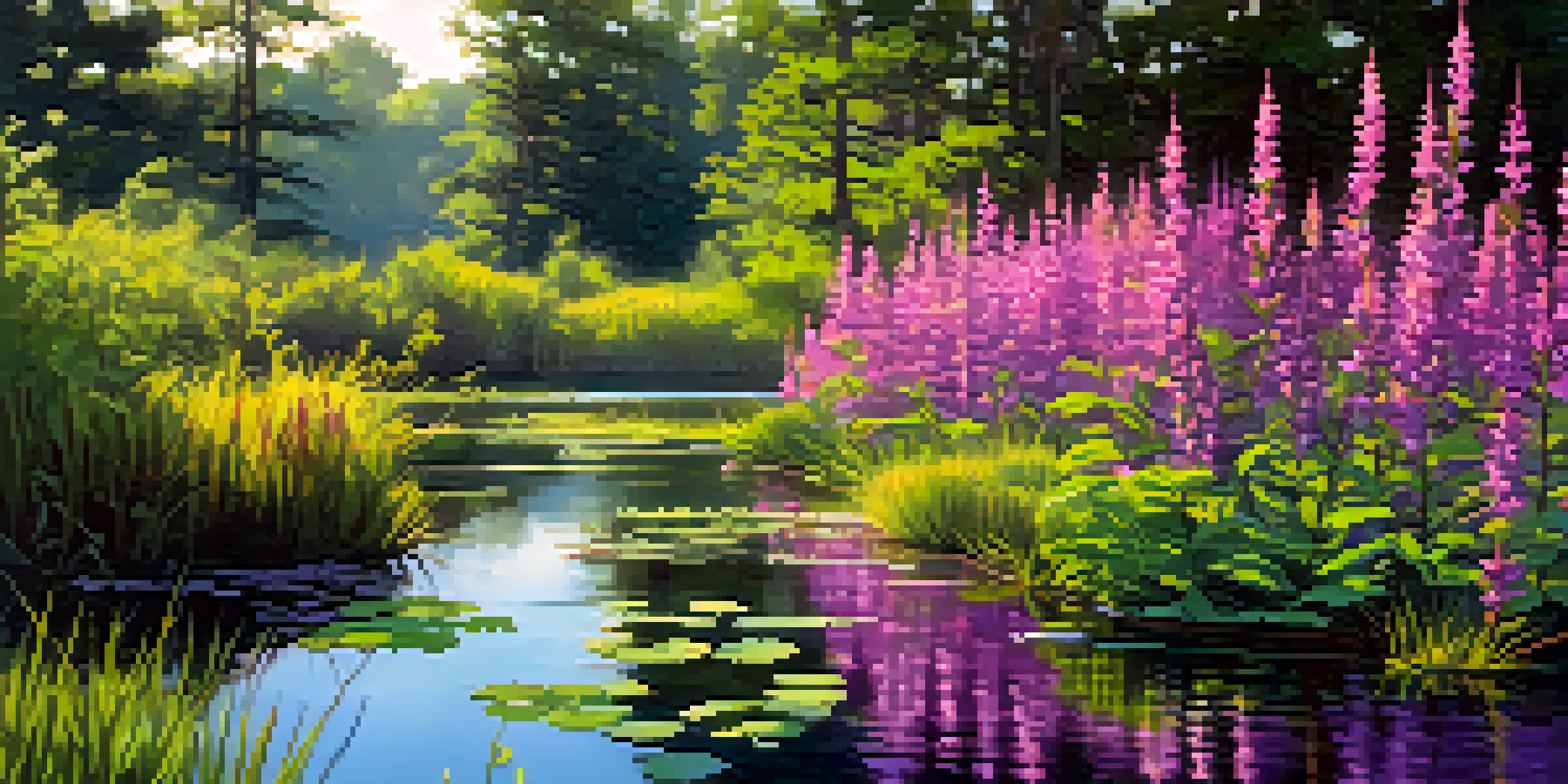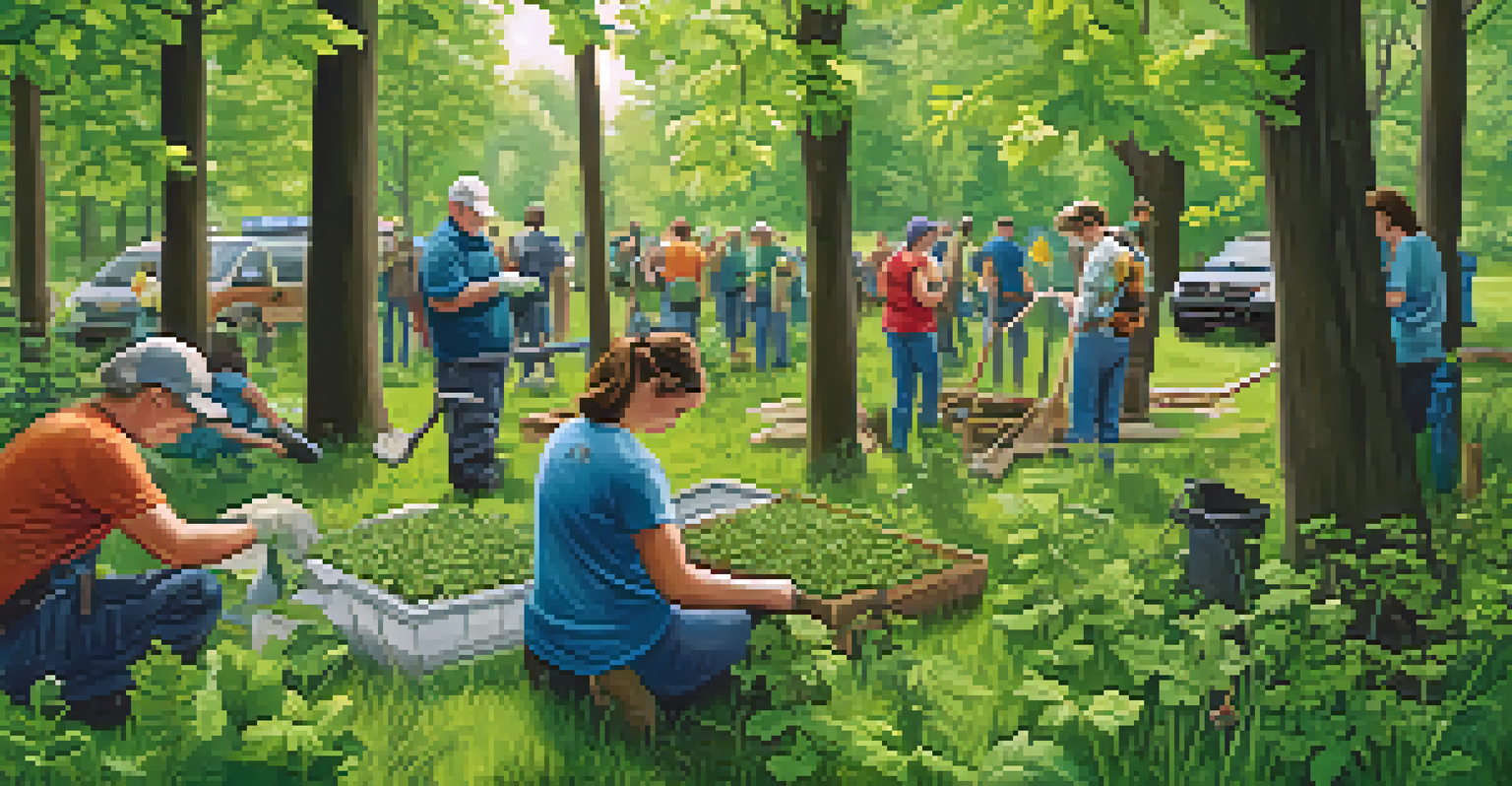How Invasive Plants Outcompete Native Flora and Fauna

What Are Invasive Plants and Why Are They Problematic?
Invasive plants are species that are non-native to a particular ecosystem and can cause significant harm. They often thrive in new environments, outcompeting local flora for resources. Their aggressive growth habits can disrupt the balance of local ecosystems, leading to reduced biodiversity.
In nature, nothing exists alone.
These plants can smother native species, block sunlight, and deplete soil nutrients, making it challenging for native plants to survive. An example is the kudzu vine in the southeastern United States, which grows rapidly and can cover trees, buildings, and other plants, effectively choking them out.
The problem is not just ecological; invasive plants can also affect local economies and human health. By understanding what invasive plants are and their harmful effects, we can better appreciate the urgency of addressing their spread.
How Invasive Plants Disrupt Native Ecosystems
Invasive plants often disrupt native ecosystems by altering habitats and the relationships between species. For instance, they can change soil chemistry, which can affect the growth and survival of native plants. This disruption can lead to a cascading effect on the entire food web.

Consider the case of purple loosestrife, which invades wetlands and outcompetes native plants that provide essential habitat for wildlife. As these native plants decline, the animals that depend on them for food and shelter also suffer, leading to decreased populations.
Invasive Plants Harm Ecosystems
Invasive plants disrupt local ecosystems by outcompeting native species for resources and altering habitats.
These disruptions not only threaten biodiversity but can also lead to the loss of ecosystem services, such as water filtration and carbon storage. Protecting native ecosystems means tackling the spread of invasive species head-on.
The Mechanisms Behind Invasive Plant Success
Invasive plants often possess traits that give them an advantage over native species. For example, they may have faster growth rates, more robust reproductive strategies, or greater adaptability to various environments. This allows them to thrive where native plants struggle.
The greatest threat to our planet is the belief that someone else will save it.
Some invasive species, like the Japanese knotweed, can even regenerate from tiny fragments, making them incredibly difficult to eradicate. Their ability to quickly dominate an area means they can monopolize space and resources, leaving little for native flora.
Additionally, many invasive plants lack natural predators in their new environment, allowing them to proliferate unchecked. Understanding these mechanisms can help us develop better management strategies to combat invasive species.
The Role of Climate Change in Invasive Plant Spread
Climate change significantly affects the distribution and spread of invasive plants. As temperatures rise and weather patterns shift, many invasive species find new opportunities to establish themselves in previously unsuitable areas. This increases the potential for conflict with native species.
For example, as winters become milder, invasive plants that would typically be limited by cold temperatures can spread farther north. This means that regions that once thrived with native flora may soon be overrun by invasive species.
Wildlife Suffers from Invasives
The spread of invasive plants negatively impacts wildlife by reducing food and shelter availability for native animals.
This dynamic underscores the importance of addressing climate change alongside the management of invasive species. By understanding how these two factors interact, we can better protect our native ecosystems.
The Impact of Invasive Plants on Wildlife
Invasive plants not only threaten native flora but also have profound impacts on local wildlife. Many animals rely on specific native plants for food, shelter, and breeding. When invasive species outcompete these natives, it can lead to declines in animal populations.
For instance, the spread of garlic mustard can reduce the availability of native plants that caterpillars feed on, ultimately impacting bird populations that rely on those caterpillars. This creates a ripple effect throughout the ecosystem, as each species plays a role in maintaining balance.
Protecting native plants is crucial for supporting the wildlife that depends on them. Understanding these connections helps highlight the need for concerted conservation efforts.
Managing and Controlling Invasive Plant Species
Effective management of invasive plants requires a multi-faceted approach. This can include physical removal, chemical treatments, and even biological control methods, where natural predators of the invasive species are introduced. Each method has its pros and cons, and often a combination works best.
Community involvement is also key in managing invasive species. Local groups can organize removal events and educate others on how to identify and report invasive plants. Engaging the community fosters a collective responsibility towards protecting local ecosystems.
Restoration Supports Native Flora
Efforts to restore native plant populations are essential for rebalancing ecosystems and supporting local biodiversity.
Moreover, prevention is often more effective than treatment. By understanding how invasive plants spread, we can implement measures to prevent their introduction and establishment in new areas.
The Importance of Native Plant Restoration Efforts
Restoring native plant populations is crucial for maintaining healthy ecosystems. Native plants support local wildlife, improve soil quality, and help preserve water resources. Restoration efforts can help rebalance ecosystems that have been disrupted by invasive species.
For example, reintroducing native grasses and wildflowers can provide essential habitat and food sources for local fauna. These restoration projects not only enhance biodiversity but also promote resilience against future invasions.

In many cases, community-led initiatives can make a significant impact. By working together, we can create a more sustainable environment that celebrates our native flora and fauna.